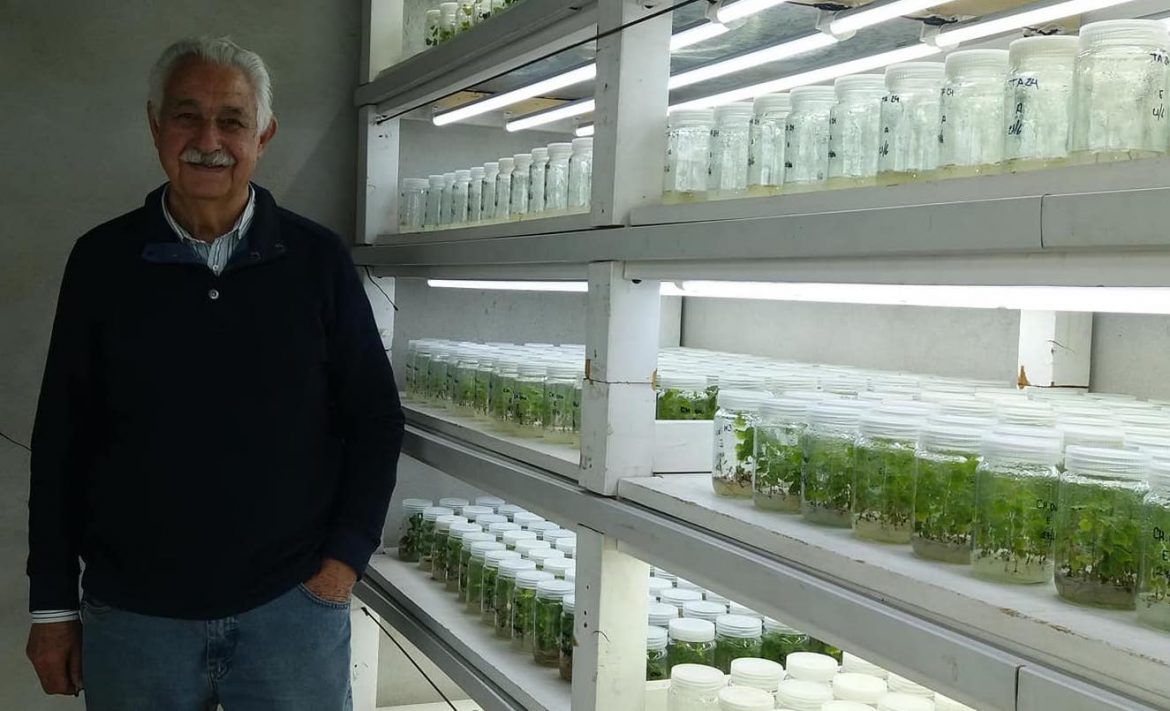Aldo Biondolillo hasn’t taken his mission to find the best Malbec clones in Argentina lightly. In 2000, he took 8,000 different Malbec clones from around the country (mainly from pre-phylloxera vines that were brought to Argentina over 100 years ago) and replanted them in his ‘genetic bank’ at his family winery, Tempus Alba, in Maipú.
Since then he has whittled this selection down to 589 clones, then just 16, and at the moment is mainly focusing on just five: TA14, TA 15, TA 18, TA 22 and TA 24 (TA standing for Tempus Alba). Most of the clones actually come from old pre-phylloxera genetic material, but his unrelenting study has been looking at finding only the best quality and most economically sustainable clones.
“There’s a big crisis in the industry because we are all suffering a loss of sustainability as grape and wine producers, and the only way to recover is by having vineyards that are more sustainable in terms of kilos per hectare and higher prices,” he explained to me over a casual interview and tasting about his work with Malbec clones. “We need to optimise the quality of the wine in order to stabilise and improve the sales price, and we need sustainable, higher yields too. It isn’t true that vineyards of higher yields are lower quality… there are clones with higher yields and great quality!”
Selecting Malbec clones based on quality and quantity
His first stage of selection, which brought 8,000 clones down to 589 clones between the years 2000 and 2004, was based on the visual aspect and yield of the vine. Some of the ancient Malbec clones only yield 4 tonnes per hectare, which Aldo reasons isn’t economically sustainable for any producer, and so the goal was to find clones that yielded between 9 to 10 tonnes per hectare for super-premium, icon (aka. expensive) wines, and 12 to 14 tonnes per hectare for mid-range wines.
The second stage was then looking at the quality of the wine, by planting 50 to 100 vines of each clone (times that by 589 clones and you are looking at an eye-watering experimental vineyard with 50,000 or so vines) to be able to make microvinifications of each clone. Then, over a period of six years, based on the quality of the wines made from these clones, 16 were selected for the next stage and five have been widely planted by different producers around the country. Using in vitro propagation, he can also ensure the clones he is breeding are virus free, uniform and entirely traceable.
“Producers have been buying my clones because they can see the quality and also the improvements in yield,” explains Aldo, rattling off a list of some rather impressive names in the industry who have begun planting and grafting the Tempus Alba clones.
Does Aldo believe that there should be just one super clone for Malbec?
“No!” he says adamantly. “The idea is to have many clones, but all high quality and sustainable clones, which can give you different expressions of Malbec.” The next part of his masterplan is to create a nationwide sensorial map of not only the clones but of Malbec: looking at how each clone performs in each region, and how the Malbec character changes per region. A stage in which many wineries, who are part of his experimentation circle, are participating.
As I taste with him a small sample of wines from Vista Flores, Anchoris and Cafayate (each produced from TA18 under the same vinification method), it’s clear to see the major differences between region, and his plan this vintage is to be able to show the same with the different clones too.
Solving the question of sustainability and quality with this extensive selection of Malbec clones is complete in Aldo’s mind, and he’s got no better example than his own winery. “Before our clonal work, our top wine we could only sell for US$11 FOB, and now our top wine sells for over US$30 FOB — and clients are very happy to pay for it because the quality is there!”
Although he’s received some state funding in order to hire his core team of scientists and specialists, this is largely the work of an obsessive economist and winemaker on a mission to give Argentina’s wine industry a greater opportunity to succeed. Admirable in his ambition and in his achievements to date, he’s not willing to slow down — this septuagenarian has many more genetic projects under his sleeve.
He’s already moved on to look at the best clones for Tempranillo, a long neglected variety in Argentina which actually claims over 5,500 hectares of vineyards but has a poor commercial standing, and he is also focused on his sensorial map for Malbec and his family of Malbec clones.
“I’m looking for this interaction now between terroir and genetics — we’ve done the part of precision viticulture, and this is what I call precision enology,” he says proudly, as we finish making our own blend of our favourite combination of terroir — mine quite different to his, but each distinctive and delicious. “Between the terroir and genetic differences, I want to show that Malbec isn’t a variety you can get bored of…”
As someone who has spent over 20 years working with 8,000 types of Malbec, I trust he’d know.
